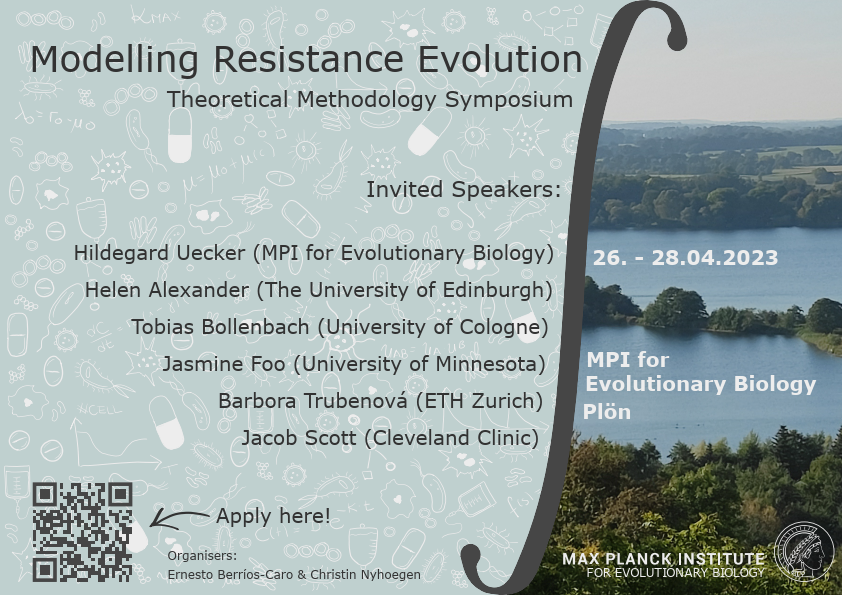Speaker
Description
Populations of microbial pathogens or cancer cells possess enormous adaptive potential. Such adaptations regularly lead to the failure of treatment, with drastic consequences for individual and public health. From a reductionistic viewpoint, the fundamental processes in such microbial populations are replication, mutation and death. Characterizing these processes by traits allows us to understand adaptation as an uphill walk on a fitness landscape spanned by replication rate and death rate, with mutation rate dictating the walking speed in this picture. Different treatment types exist to tamper with any of these fundamental processes. How such treatment types affect the trajectory of adaptation in trait space is not clear. In this contribution, I will tackle this question and present i) which exact trajectory a population takes in a trait space spanned by replication rate and death rate, ii) how this trajectory is affected by treatment, and iii) how treatments that target either the population size via bottlenecking or the traits via static and toxic drugs differ. Further, I will discuss the fitness gradient(s) that prescribe the adaptation and show that the information on such fitness gradients can guide effective treatment strategies.

